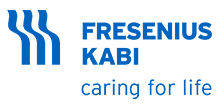预约演示
更新于:2025-05-07
Pharyngolaryngitis
咽喉炎
更新于:2025-05-07
基本信息
别名 Laryngopharyngitis、Laryngopharyngitis NOS、Pharyngolaryngitis + [8] |
简介- |
关联
13
项与 咽喉炎 相关的药物作用机制 Bacterial DNA gyrase 抑制剂 [+1] |
在研机构 |
最高研发阶段批准上市 |
首次获批国家/地区 日本 |
首次获批日期2008-01-25 |
作用机制 Bacterial DNA gyrase 抑制剂 [+1] |
最高研发阶段批准上市 |
首次获批国家/地区 日本 |
首次获批日期2007-07-31 |
作用机制 Bacterial DNA gyrase 抑制剂 [+1] |
原研机构 |
最高研发阶段批准上市 |
首次获批国家/地区 美国 |
首次获批日期1999-12-10 |
102
项与 咽喉炎 相关的临床试验CTR20244510
头孢泊肟酯干混悬剂人体生物等效性研究
是以中国健康受试者为试验对象,采用自身交叉对照的试验设计,测定头孢泊肟酯干混悬剂受试制剂给药后血浆中的头孢泊肟在健康受试者体内的血药浓度经时过程,估算相应的药代动力学参数,并以第一三共株式会社持证生产的头孢泊肟酯干糖浆【商品名:Banan®,规格:50mg/g,100g/瓶】为参比,评价制剂间的生物等效性,并观察头孢泊肟酯干混悬剂在中国健康受试者中的安全性。
开始日期2024-12-24 |
申办/合作机构 |
CTR20244113
小儿法罗培南钠颗粒人体生物等效性试验
采用单中心、随机、开放、两制剂、两周期交叉、单剂量给药设计比较空腹和餐后给药条件下,浙江普洛康裕制药有限公司提供的小儿法罗培南钠颗粒(规格:50 mg(按C12H15NO5S计))与マルホ株式会社(玛路弘株式会社)持证的小儿法罗培南钠颗粒(规格:10%(0.5g/包),商品名:Farom for Pediatric®)在中国健康人群中吸收程度和吸收速度的差异,并评价浙江普洛康裕制药有限公司提供的小儿法罗培南钠颗粒的安全性。评价小儿法罗培南钠颗粒在中国健康受试者中的适口性,为小儿法罗培南钠颗粒用药口感提供依据。
开始日期2024-11-21 |
申办/合作机构 |
CTR20243475
一项随机、开放、单剂量、两周期、双交叉、空腹和餐后给药临床研究,评价盐酸多西环素片与Vibramycin在中国健康成年受试者中的生物等效性
主要目的:
以广州康和药业有限公司生产的盐酸多西环素片(100mg(按C22H24N2O8计))受试制剂,按生物等效性试验的有关规定,与Pfizer Japan Inc持有的盐酸多西环素片(商品名:Vibramycin,规格:0.1g(按C22H24N2O8计))为参比制剂,进行生物等效性试验,比较两种制剂在空腹和餐后条件下单次给药的生物等效性。
次要目的:
评估单剂口服受试制剂(盐酸多西环素片,T)和参比制剂(Vibramycin,R)在中国健康成年受试者中的安全性。
开始日期2024-10-04 |
申办/合作机构 |
100 项与 咽喉炎 相关的临床结果
登录后查看更多信息
100 项与 咽喉炎 相关的转化医学
登录后查看更多信息
0 项与 咽喉炎 相关的专利(医药)
登录后查看更多信息
125
项与 咽喉炎 相关的文献(医药)2024-06-01·Internal Medicine
<i>Clostridium paraputrificum</i> Bacteremia in a Patient with Rectal Cancer after Receiving Antibiotic Therapy for Acute Pharyngolaryngitis
Article
作者: Matsumoto, Kazuhito ; Nakai, Hajime ; Kudo, Naomi ; Echizenya, Takuma ; Ikejima, Shin ; Miura, Ryo ; Hoshi, Kentaro ; Matsubara, Atsushi ; Kubo, Norihito ; Maeda, Yasunori
2024-04-01·Auris Nasus Larynx
Efficacy, safety, and tissue penetration of solithromycin in Japanese patients with otorhinolaryngological infections
Article
作者: Kurono, Yuichi ; Suzuki, Kenji ; Watanabe, Akira ; Shimada, Satoshi ; Kudo, Fumiyo ; Yamatake, Takahiro
2024-01-01·Nihon Shokakibyo Gakkai zasshi = The Japanese journal of gastro-enterology
[A case of immune-related gastroesophagitis with laryngopharyngitis caused by immune checkpoint inhibitors in nonsmall cell lung cancer].
Article
作者: Kamoshida, Toshiro ; Nakamura, Ryo ; Ochi, Masanori ; Yamaguchi, Yuji ; Okawara, Haruka ; Okawara, Atsushi ; Hamano, Yukako ; Oka, Yasuhiro ; Kakinoki, Nobushige ; Mabuchi, Keisuke
44
项与 咽喉炎 相关的新闻(医药)2025-03-28
发布日期:2025-03-28
2025年3月25日,国家药品监督管理局药品审评中心(CDE)官网显示,由盈科瑞自主研发的中药1.1类创新药金桔余甘含片获得临床试验默示许可。是继固本消疹颗粒、小儿苓龙早熟颗粒等产品获批后,盈科瑞在2025年第一季度取得的第6个新药批件。
金桔余甘含片由经典名方“桔梗汤”化裁而来,方小力专,具有清热解毒,利咽生津的功效。用于治疗外感风热型急性咽炎,证见咽痛,咽干灼热,咽黏膜色鲜红或肿,发热,头痛,咳嗽痰黄,舌质边尖红,苔薄白,脉浮数。
急性咽喉炎是常见的上呼吸道感染疾病,多为病毒或细菌感染所致,受凉、过度疲劳、免疫力降低等也可导致疾病发生。急性咽喉炎属于中医学“急喉痹”范畴,2012年中医耳鼻咽喉科常见病诊疗指南中将急喉痹分为外感风热证、外感风寒证、肺胃热盛证。急喉痹(外感风热证)通常表现为咽部灼热发干而痛,咽壁轻度红肿,咽喉堵塞感明显,痰多,或有头痛鼻塞,发热恶风,咯痰咳嗽,舌尖红,苔黄白等。目前西医临床通常使用抗生素治疗,虽有其治疗效果,但患者服用抗生素可能出现皮疹、腹泻等多种不良反应,并存在耐药性、副作用较大、易复发等问题。中医药疗法在应对急性病证方面有着独特的优势,特别是针对于流感、热病、病毒性疾病等,如《伤寒论》等专著,而历代医家在治疗急喉痹方面也颇有经验及疗效。金桔余甘含片处方由张仲景《伤寒论》中的“桔梗汤”化裁而来,既具清解火热之邪以固本,又能散肺热以利咽生津止咳,具有安全可靠、副作用少、临床疗效较好的特点,专攻急性咽炎咽喉肿痛之证,效果显著,具有广阔的使用前景。
近年来,盈科瑞一直高度重视中医药传承和运用,致力于中药创新药和新制剂的研发,在2025年第一季度,已取得3个新药生产批件和3个临床批件,并有多个品种在审评审批中,未来也将继续加大对创新中药的投入,丰富和完善产品管线,充分发挥产业优势和研发实力,力争研发更多安全有效的药品,快速推进创新产品落地上市,为广大患者提供更为先进,更多种类的治疗方案和用药选择,为我国健康事业持久发力。
上一篇:盈科瑞改良创新药盐酸左旋沙丁胺醇异丙托溴铵雾化吸入溶液喜获临床批件 下一篇:重磅!全国首个用于儿童性早熟的中药创新药获批临床,盈科瑞儿科管线再结硕果
申请上市临床申请
2025-03-14
·学术经纬
▎药明康德内容团队编辑
李阿姨(化名)今年52岁,在3年前,她开始断断续续地咳嗽,有时还会咳出来少量白粘痰,咽喉部经常有异物感,导致频繁清嗓子。之前她以为是咽炎或者反酸烧心(胃食管反流),自己买过药来吃,但并没有好转。有一次实在太难受了,这才去医院就诊,医生逐一做了咽喉、肺部、胃部和食管、气管和支气管方面的检查,但并没有找到真正的原因。
后来医生询问病史发现,李阿姨过去10年里还常有鼻塞、流鼻涕的症状。体检医生也说她有鼻炎,但她一直没有进行治疗。
后来经过门诊鼻咽镜检查发现,李阿姨的鼻粘膜、咽喉充血水肿,咽喉后部有少量白色粘液分泌物,最终被医生诊断为鼻后滴流综合征(也叫上气道咳嗽综合征)。在对症治疗下,李阿姨的咳嗽在2周后就基本消失了。
图片来源:123RF
很多人和李阿姨一样,没想到鼻部疾病也会造成咳嗽。
实际上,如果长期咳嗽还有痰,经常清嗓子,不一定是咽喉、肺部、气管和食管等方面的问题,还可能是得了鼻后滴流综合征。
那么,鼻后滴流综合征是一种什么疾病?今天,健康榨知机就带大家来了解一下。
鼻后滴流综合征,又称为上气道咳嗽综合征,是引起慢性咳嗽的常见病因之一,往往因为鼻部疾病(比如鼻炎、鼻窦炎)引起分泌物倒流到鼻腔后方、流入咽喉而产生,或因为鼻部、咽喉部疾病(比如慢性咽喉炎、慢性扁桃体炎)刺激上气道咳嗽感受器,而导致以咳嗽为主要表现的临床综合征。
鼻后滴流综合征有哪些症状?
可表现为咳嗽、咳痰、鼻塞、鼻腔分泌物增加、频繁清嗓、咽喉后部有黏液附着及鼻后滴流感,有时还会伴有鼻痒、打喷嚏、水样涕(俗称“清水鼻涕”)及眼痒等症状。
除了上述症状之外,由于原发鼻部疾病的病因不同,还可能伴有以下不同的症状:
变应性鼻炎(即过敏性鼻炎)相关表现:鼻黏膜为苍白或水肿,鼻道及鼻腔底可见清涕或黏涕。
非变应性鼻炎相关表现:鼻黏膜通常为肥厚或充血样改变,部分口咽部黏膜会呈现鹅卵石样改变或咽后壁附有黏脓性分泌物。
慢性鼻窦炎相关表现:首选CT检查,可以看到鼻窦黏膜增厚、鼻窦内液平面,必要时医生会考虑进行鼻内镜和变应原(即过敏原)检查。
鼻后滴流综合征容易和哪些疾病混淆?如何区分?
鼻后滴流综合征可能容易与以下疾病混淆,医生在临床上会根据患者的病史、体格检查及辅助检查结果等做出诊断,进行区分:
1. 急性上呼吸道感染
普通感冒和流行性感冒(简称“流感”)是非常常见的疾病,它们都属于上呼吸道感染,也常存在咳嗽的症状,同时也会引起短期的鼻后滴流症状。
图片来源:123RF
普通感冒主要表现为流涕、喷嚏、鼻塞和鼻后滴流感等鼻部症状,以及咳嗽、咽喉刺激感或不适,严重者有发热、头痛等症状。
流感一般起病更急,以全身症状为主,合并咽喉痛、咳嗽、鼻塞、流涕等上呼吸道症状。
这类上呼吸道感染引起的咳嗽多为刺激性干咳或咳少量黏液痰,咳嗽往往持续约2周,部分症状较轻、体质较好的患者没经过治疗也可能自然好转。
2. 感染后咳嗽(感冒后咳嗽)
当呼吸道感染的急性期症状消失后,咳嗽仍然持续不见好,通常表现为刺激性干咳或咳少量白色黏液痰,持续3~8周或更长时间,但X线胸片检查无异常,这就是感染后咳嗽。
病毒性感冒是感染后咳嗽最常见的原因之一,所以感染后咳嗽又称为“感冒后咳嗽”。之前有感染后咳嗽病史和咳嗽敏感性增加的患者更容易发生感染后咳嗽。
3. 急性气管‑支气管炎
主要表现为咳嗽和咳痰,更容易发生在秋冬季节。初期干咳,之后可能出现咳痰,病程后期会出现黏液脓性痰。咳嗽通常持续2~3周。
医生在进行肺部体格检查时,会发现双肺呼吸音粗,有时会听到及湿性啰音和哮鸣音;血常规检查白细胞计数和分类通常没有明显异常;细菌感染时白细胞计数和中性粒细胞比例可增高,C反应蛋白(CRP)水平升高;胸部影像学检查无明显异常或仅有肺纹理增加。
4. 迁延性感染性支气管炎(PIB)
由于抵抗力低下、排痰不畅、细菌耐药或抗感染疗效不佳等原因,病原体在支气管内不能被及时有效清除,病程迁延超过3周,就是迁延性感染性支气管炎。
迁延性感染性支气管炎更多发生在婴幼儿群体,在成人中也偶尔会发生。
如果患者伴有咳痰、黄脓痰以及喉部黏液,医生会诊断为迁延性感染性咳嗽。
图片来源:123RF
5. 咳嗽变异性哮喘(CVA)
CVA是哮喘的一种特殊类型,咳嗽是其唯一或主要临床表现,患者没有明显喘息、气促等症状或体征,但存在气道高反应性(通俗来说就是气道非常敏感)。CVA是慢性咳嗽最常见的病因之一,约占慢性咳嗽的1/3。
对于夜间咳嗽为主的患者,医生会首先考虑咳嗽变异性哮喘。
6. 嗜酸粒细胞性支气管炎
表现为慢性咳嗽,大多为刺激性干咳或伴少量黏痰。嗜酸粒细胞性支气管炎以气道嗜酸粒细胞浸润为特征。大约1/3的嗜酸粒细胞性支气管炎患者合并变应性鼻炎。
嗜酸粒细胞性支气管炎临床表现缺乏特异性,体格检查无异常,痰嗜酸粒细胞增高是其主要诊断依据。
之前曾有一些案例报道,患者因接触面粉、异氰酸或氯氨等引起了嗜酸粒细胞性支气管炎,因此,医生在诊断嗜酸粒细胞性支气管炎时通常会考虑职业因素。
7. 变应性咳嗽
变应性咳嗽也是慢性咳嗽的常见病因,多表现为刺激性干咳。
临床上某些慢性咳嗽患者具有特应质[是指一种易于发展成特应性皮炎、变应性鼻炎及哮喘等变应性疾病的基因倾向,这类人群具有对螨虫、花粉、食物等常见环境变应原产生特异性免疫球蛋白(Ig)E的能力],痰嗜酸粒细胞正常,无气道高反应性,糖皮质激素及抗组胺药物治疗有效,就被称为变应性咳嗽。
8. 胃食管反流性咳嗽
胃食管反流性咳嗽是胃酸和其他胃内容物反流进入食管导致的、以慢性咳嗽为唯一或主要症状的临床综合征,是一种特殊类型的胃食管反流病。
这类患者的慢性咳嗽以白天咳嗽更常见,少数患者可有夜间咳嗽。
如果患者伴随反酸、嗳气、胸骨后烧灼感等症状或者餐后咳嗽加重,医生就会考虑胃食管反流性咳嗽的可能,或许需要进行食管反流监测检查。经过抗反流治疗后,患者的咳嗽一般会明显减轻或消失。
此外,如果患者咳嗽时痰中带血或咳血,医生可能会考虑气管‑支气管结核、支气管扩张症和肺癌的可能;对于有过敏性疾病史和家族史者,医生可能会考虑是不是变应性鼻炎和支气管哮喘相关的咳嗽;对于有特殊职业接触史者,医生还可能会考虑职业性咳嗽的可能。
鼻后滴流综合征如何治疗?
1. 若病因为非变应性鼻炎及普通感冒
医生会考虑首选第一代抗组胺药(如氯苯那敏)和减充血剂(如伪麻黄碱)进行治疗,大多数患者会在接受治疗后数天至2周内好转。
2. 若病因为变应性鼻炎
医生会考虑首选鼻用激素(如布地奈德、糠酸莫米松和丙酸氟替卡松)和口服第二代抗组胺药(如氯雷他定、西替利嗪等)或鼻用抗组胺药,疗程不少于2周;也可能会建议患者口服白三烯受体拮抗剂(如孟鲁司特),疗程为8~12周。
图片来源:123RF
对于症状严重难以控制者的患者,医生会建议短期口服激素(如泼尼松)进行治疗;对于严重者特别是合并鼻窦炎、鼻息肉的患者,医生也可能会建议使用生物制剂如抗IgE单抗、白细胞介素(IL)‑5单抗、IL‑5受体单抗或抗IL‑4单抗治疗,以及过敏原免疫治疗和外科治疗。
3. 若病因为慢性鼻窦炎
(1)细菌性鼻窦炎多为混合感染,对于急性发作者,医生一般会考虑抗感染治疗,疗程7~10天;对于慢性者,医生会酌情延长抗感染时间。这类治疗一般首选阿莫西林或头孢呋辛酯,备选阿莫西林/克拉维酸、头孢克洛、头孢丙烯或左氧氟沙星等。
(2)医生还可能会建议联合鼻用激素治疗,疗程为3个月以上。针对合并严重复发性鼻息肉者,医生或会建议短疗程口服激素(10~14天)或采用序贯疗法(1~6个月)治疗。
(3)持续性严重鼻塞和急性发作时,医生可能会建议使用鼻腔局部减充血剂(羟甲唑啉),疗程<7天,还可能会考虑联合口服抗组胺药治疗。
(4)对于常规内科治疗无效的患者,医生还可能会考虑生物制剂治疗。必要时,医生或许会进行内镜鼻窦手术治疗。
(5)为了避免或减少接触过敏原,医生可能会建议通过鼻腔生理盐水冲洗,口服祛痰剂及黏液溶解剂(羧甲司坦、厄多司坦、桉柠蒎或桃金娘油)对慢性鼻窦炎患者进行治疗。
另外,你可能还想知道:
打流感疫苗前必看:4类人不建议接种
为什么有的人很少生病,一生病就是大病?
如何提高免疫力?
……
点击下方名片关注【健康榨知机】
在消息对话框回复: 感冒
获取更多相关健康知识
▼
参考资料
[1] 医生,为什么我一咳嗽就会咳很久?(内附典型案例). Retrieved Mar 10, 2025, from https://mp.weixin.qq.com/s/sBQIAI7MhNjsPkEO7EW_sg
[2] 中华医学会, 中华医学会杂志社, 中华医学会全科医学分会, 等. 中国咳嗽基层诊疗与管理指南(2024年)[J]. 中华全科医师杂志, 2024, 23(8): 793-812. DOI: 10.3760/cma.j.cn114798-20240326-00177.
[3] 钟文伟, 张建华. 儿童特应质与呼吸道感染易感性 [J] . 中华实用儿科临床杂志, 2019, 34(10) : 730-733. DOI: 10.3760/cma.j.issn.2095-428X.2019.10.003.
免责声明:药明康德内容团队专注介绍全球生物医药健康研究进展。本文仅作信息交流之目的,文中观点不代表药明康德立场,亦不代表药明康德支持或反对文中观点。本文也不是治疗方案推荐。如需获得治疗方案指导,请前往正规医院就诊。
版权说明:本文来自药明康德内容团队,欢迎个人转发至朋友圈,谢绝媒体或机构未经授权以任何形式转载至其他平台。转载授权请在「健康榨知机」微信公众号回复“转载”,获取转载须知。
如有其他合作需求,请联系wuxi_media@wuxiapptec.com
健康榨知机 丨药明康德团队打造
微信号 : ey_global
▇ 关注我们,掌握新鲜有料的健康资讯
分享、点赞、在看,传播健康知识
AHA会议
2025-02-24
·华森制药
咽喉炎是常见的疾病,发病率高且容易复发,给患者带来不少困扰,是常见的上呼吸道疾病,主要包括急性咽喉炎、慢性咽喉炎和反流性咽喉炎三种类型。
急性咽喉炎:呈咽部干燥、灼热感,具有明显的咽痛,吞咽时痛感加剧。可能伴有发热、头痛、食欲不振、四肢酸痛、咳嗽和声音嘶哑等。
慢性咽喉炎:呈咽部异物感、痒感、灼热感、干燥感或微痛感。可能出现频繁的刺激性咳嗽,伴恶心,咳出黏稠分泌物等。
反流性咽喉炎:是指胃内容物异常反流入咽、喉及上呼吸道而引起的一种慢性症状或黏膜损伤。反流性咽喉炎的症状多变,多有咽部不适、异物感或灼热感,可有声音嘶哑;少数患者可引起哮喘发作。
在饭后、平躺等情况下,反流现象明显增加,上述症状就更加明显。多数患者可伴有程度不同的胃食管反流病的症状,如胸痛、胃灼热、反酸、胃胀等。
冬春交替是咽喉炎的高发季节。想要预防咽炎,就要少吃油腻、煎炸、烧烤等热性食物,以免滋生内火,引发咽炎。
平时我们可以适当多吃些益于嗓子的新鲜水果和食物,比如梨、白菜、菠菜、苹果、香蕉、萝卜、油菜、芹菜、蜂蜜、豆制类食品等,清淡饮食可润喉、清嗓。还要注意多饮水,避免体内缺水导致上火。
同时,还要做好口腔、呼吸道清洁和保护工作,尽量避免处于空气不流通及粉尘多的环境中。
对于,已出现的咽喉炎症状,我们一定要积极就医治疗,免得对我们的工作和生活造成不小的影响。
华森制药甘桔冰梅片由桔梗、薄荷、射干、青果、冰片、蝉蜕、乌梅、甘草共八味药物组方而成。甘草、桔梗经典组合,具有清热解毒、清喉利咽、祛痰止咳等多种作用;薄荷、射干、冰片可抗炎抑菌、抗病毒、消肿止痛,且冰片可促进药物吸收,使甘桔冰梅片更快、更好地发挥功效,尤其适用于以咽痛、咽干、声音嘶哑为主要特征的咽炎。
分析
对领域进行一次全面的分析。
登录
或

生物医药百科问答
全新生物医药AI Agent 覆盖科研全链路,让突破性发现快人一步
立即开始免费试用!
智慧芽新药情报库是智慧芽专为生命科学人士构建的基于AI的创新药情报平台,助您全方位提升您的研发与决策效率。
立即开始数据试用!
智慧芽新药库数据也通过智慧芽数据服务平台,以API或者数据包形式对外开放,助您更加充分利用智慧芽新药情报信息。
生物序列数据库
生物药研发创新
免费使用
化学结构数据库
小分子化药研发创新
免费使用







